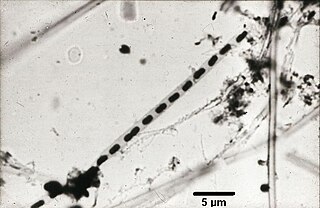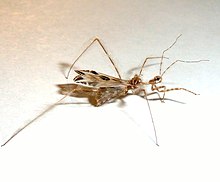Rhodobacterales are an order of the Alphaproteobacteria.

The Comamonadaceae are a family of the Betaproteobacteria. Like all Pseudomonadota, they are Gram-negative. They are aerobic and most of the species are motile via flagella. The cells are curved rod-shaped.

The Methylobacteriaceae are a family of Hyphomicrobiales.

The Pasteurellaceae comprise a large family of Gram-negative bacteria. Most members live as commensals on mucosal surfaces of birds and mammals, especially in the upper respiratory tract. Pasteurellaceae are typically rod-shaped, and are a notable group of facultative anaerobes. Their biochemical characteristics can be distinguished from the related Enterobacteriaceae by the presence of oxidase, and from most other similar bacteria by the absence of flagella.

The Alteromonadales are an order of Pseudomonadota. Although they have been treated as a single family, the Alteromonadaceae, they were divided into eight by Ivanova et al. in 2004. The cells are straight or curved rods. They are motile by the use of a single flagellum. Most of the species are marine.
The Alteromonadaceae are a family of Pseudomonadota. They are now one of several families in the order Alteromonadales, including Alteromonas and its closest relatives. Species of this family are mostly rod-like shaped and motile by using one polar flagellum.

The Chilean angelshark is an angelshark of the family Squatinidae found in the subtropical waters of Chile, that grows up to 1.03 metres in length. The holotype is lost. The species was redescribed and a neotype designated in 2024. Reproduction is ovoviviparous.

The Emesinae, or thread-legged bugs, are a subfamily of the Reduviidae. They are conspicuously different from the other reduviids by their very slender body form. They are stalking, predatory insects that can be collected on palm fronds, cliffs, spider webbing, or near lights at night. They walk on their mid and hind legs; the front pair is raptorial. Some groups specialize on spiders. Very little is known about emesines except that many species are found in the tropics. Pedro Wygodzinsky wrote the most recent revision of this group.

Bacteroidales is an order of bacteria. Notably it includes the genera Prevotella and Bacteroides, which are commonly found in the human gut microbiota.
Gardena is a genus of thread-legged bugs in the subfamily Emesinae. It is the second-largest genus in the tribe Emesini. Presently there are 46 described species.
Bagauda is a genus of thread-legged bug in the Emesinae. 18 species are currently known. Many of the species of this genus are associated with caves, some exclusively so. Bagauda is synonymous with the genus Pleias Kirkaldy, 1901, but Bagauda has become more widely used. The genus is restricted to Old World tropics.
Onychomesa is a little-known genus of thread-legged bug in the subfamily Emesinae. Three species have been described, one from India, Japan, and Taiwan.
The Collartidini is a tribe of thread-legged bugs restricted to Africa, Sri Lanka and Taiwan. Wygodzinsky (1966) proposed that this group is the sister group of the remaining Emesinae.
Stenolemus alikakay is a species of assassin bug, family Reduviidae. It was first found in a spider web at Shanping Forest Ecological Science Park, Taiwan. It has later also been found on Ishigaki Island, the Ryukyu Islands, Japan.
Phycisphaeraceae is a family of bacteria.
Ignatzschineria is a genus of bacteria from the class Gammaproteobacteria. Ignatzschineria is named after Ignaz Rudolph Schiner.
Niabella is a genus of bacteria from the family of Chitinophagaceae.
Taibaiella is a genus of bacteria from the family of Chitinophagaceae.
Solibacillus kalamii is a Gram-positive, rod-shaped, endospore-forming and aerobic bacterium from the genus of Solibacillus which has been isolated from a high-efficiency particulate arrestance filter system from the International Space Station.
Weeksellaceae is a family in the order Flavobacteriales.







